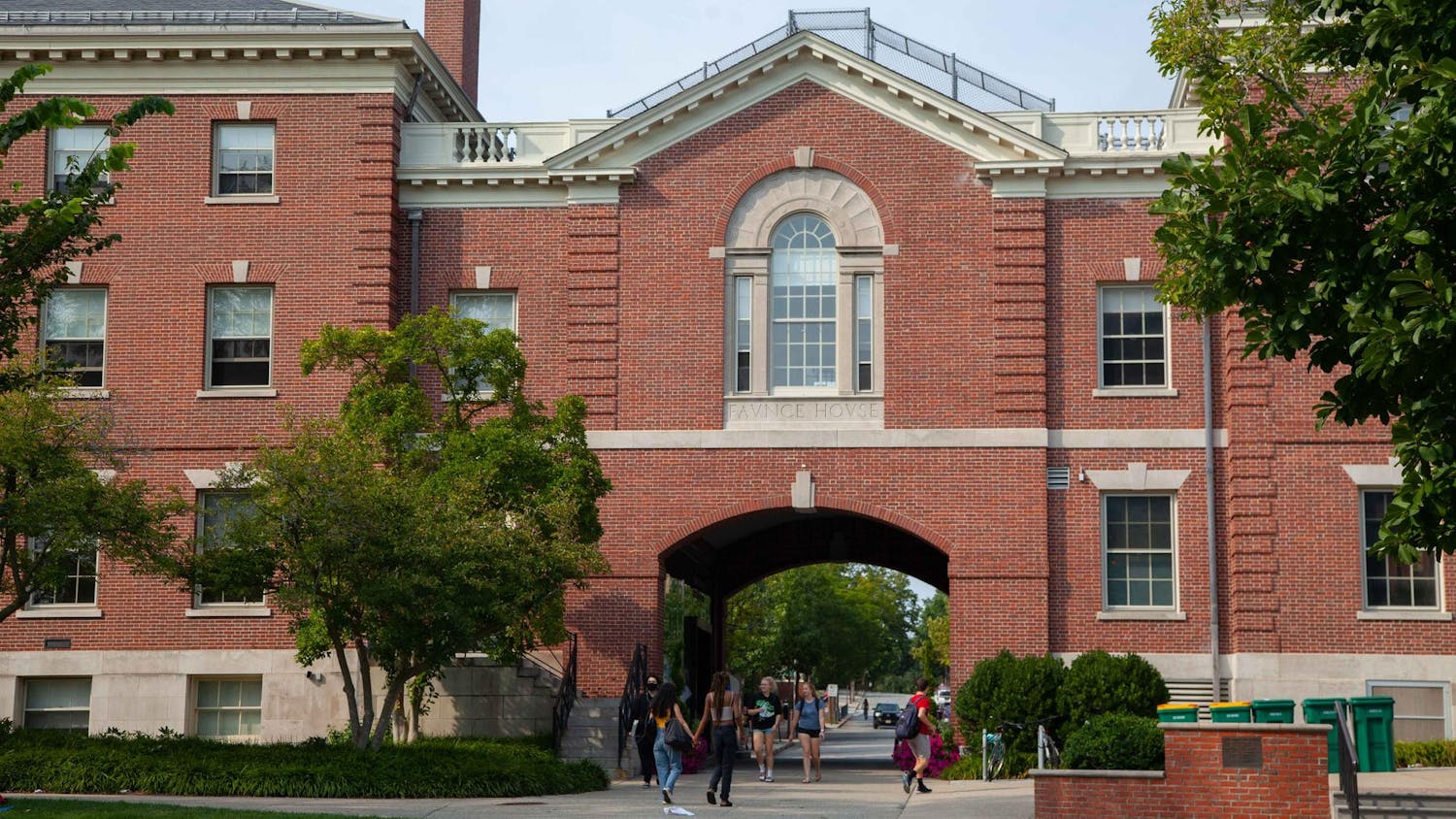The University's net assets decreased to $3.16 billion at the end of fiscal year 2012, a decrease of about 2 percent from last year's total of $3.23 billion, according to financial statements released last month. Implying that the tough national economic climate is continuing to have an effect on elite universities' finances, the market value of the University's endowment dipped to $2.48 billion as of fiscal year 2012, down from $2.53 billion in 2011, according to a report released by the University Resources Committee last month.
The dip in the value of the University's investments coincides with a fall in net contributions to the University that are linked to the end of former president Ruth Simmons' Campaign for Academic Enrichment fundraising initiative. Net contributions are counted as amounts of money that have been pledged by donors but have not yet been paid out to the University, said Beppie Huidekoper, executive vice president for finance and administration.
Simmons' capital campaign, which began in 2002 and ended in 2010, raised $1.6 billion, the largest-ever haul for a Brown fundraising campaign. There have been decreases in net contributions received by the University in the two years since the end of Simmons' campaign, according to the University's financial statements.
This year, the University received about $159 million in net contributions, an 18 percent fall from its 2010 total and a dip from last year's $161 million.
Huidekoper said she was not surprised by the fall in net contributions over the last couple years. The University collected many of its donors' most recent fundraising pledges at the tail end of Simmons' capital campaign, accounting for the recent falloff in collections, she said.
The overall decrease in net assets is also affected by the persistently struggling U.S. economy. The University's total investments declined in value from $2.88 billion at the end of fiscal year 2011 to $2.79 billion at the end of fiscal year 2012.
"It's a very challenging capital market," Huidekoper said. "We certainly hope to do better this year."
Though Huidekoper said she was concerned about the dip in the market value of the University's investments, she emphasized that Brown is not alone in dealing with a difficult economic climate.
The University's dip in endowment value and net assets comes on the heels of a report released in July by Bain and Company, a consulting firm, and Sterling Partners, a private equity firm, warning that many elite institutions including Brown were on a "financially unsustainable" economic path.
Bain and Sterling pointed to the 22 percent increase in the University's expense ratio, a measure of its costs to earnings, as an indicator of high financial risk. The report highlighted the difficulties that higher education institutions face in tough economic times, especially when faced with higher expense ratios.
"Everybody realizes that higher education has got to look at its business model," Huidekoper said. "We can't keep increasing expenditures over revenues."
University Provost Mark Schlissel P'15 cautioned against drawing too many conclusions from the Bain and Sterling report, saying he believed the firms released the study mainly for the purpose of finding new customers.
"They already have a business when they consult with universities," Schlissel said, adding that the University's peer institutions experienced varied financial performance in the past year. He cited Harvard and the Massachusetts Institute of Technology as two institutions with varied investment performances last year - Harvard's net assets fell while the MIT posted a large increase.
But Schlissel added that the University will face tough times ahead if investment yields from the endowment remain as low as in fiscal year 2012 and if the federal government does not increase its funding grants for the University's research projects. "In a difficult economy, I don't think universities are going to be able to grow their budgets like they did in the past decade," he said.
Net contributions typically fall at the end of a large capital campaign, Schlissel said. He predicted that President Christina Paxson's new capital campaign, which is currently in planning stages, will precipitate an increase in donations in coming years, as the University's donors become reengaged in a new fundraising campaign.
Huidekoper said there were no substantial changes in the past year in the type of donations given to the University's Annual Fund. Donations to the University come in the form of cash gifts, as well as "gifts of securities," which include individual stock and mutual fund shares.
The chairs of the Annual Fund, Andrea Baum '83 P'15 and Samuel Mencoff '78 P'11 P'15, could not be reached for comment. Richard Spies, interim senior vice president for advancement, declined to comment.
Donors often are able to avoid paying capital gains taxes on stock gifts, making them an attractive option for giving. "People do what's best for them with their own tax data," Huidekoper said.
Marisa Quinn, vice president for University relations, wrote in an email to The Herald that a record number of donors participated in the Annual Fund last year.
"While the amount raised is important because of the range of valuable programs the annual fund supports ... participation also matters, regardless of giving level, because we know that collectively so much more can be achieved," Quinn wrote.
Schlissel said the University continues to count on the support of its donor network for critical funding. "The University wouldn't be anywhere near as good as it is without the enthusiastic support of its alumni," he said.
The University collected $238 million in net tuition in fiscal year 2012, a 3 percent gain from last year's net total of $226 million. Net tuition has increased as a percentage of the University's overall revenue stream in recent years, accounting for about 38 percent of budget revenues in fiscal year 2013, up from about 32 percent in fiscal year 2007, according to the Universi
ty Resources Committee.
Lower total contributions raised by the Annual Fund and a flattened payout from the University's endowment have corresponded with the greater reliance on tuition revenue to cover expenses in recent years.
The University ranks first among Ivy League institutions for the percentage of its net revenue that comes from tuition, while Penn comes in second with just under 30 percent of its net revenue coming from tuition. Harvard and Princeton rely on tuition the least among Ivy League institutions, with each having under 10 percent of net revenue coming from tuition, according to the URC report. Harvard and Princeton have the first- and third-largest endowments, respectively, in the nation.
Despite the lower net contributions, the University has maintained its commitment to funding a substantial number of scholarships. The University spent 34 percent of the money raised from tuition and fees in fiscal year 2012 on scholarships to students, amounting to about $123 million. The University devoted the same percentage to scholarships in fiscal year 2011.
"We've done a lot to maintain our commitment to financial aid," Huidekoper said, adding that the 34 percent scholarships-to-overall-tuition ratio was not a "stated target" ratio. She said rather than set a fixed amount for scholarships, the University seeks to fulfill all of its financial aid obligations, given that it has a need-blind admission policy for domestic applicants.
But Huidekoper warned that the University's financial aid program, which has been growing at an average annual rate of 6 percent, has the potential to outpace revenue growth. With the endowment's decreased value from the recent financial crisis, the University has had to slash staff salaries and initiate layoffs in recent years in order to maintain its financial aid commitments, she said.
Outside experts expressed skepticism that the University is in as dire of a financial situation as the Bain and Sterling report suggested.
"I wouldn't say that places like Brown are stuck in a rut," said Tom Parker, senior associate at the Institute for Higher Education Policy. "I just don't see Brown in the category of those institutions that Bain is most concerned about."
The 34 percent share of tuition and fees going to scholarships falls within the norm for wealthier universities, Parker said. He added that he doubted the University's dip in its net assets value was due to any management problem, saying that the University has a strong financial management team.
"Expensive private schools like Brown are like hospitals," Parker said, disagreeing with assessments warning that the University is not on a steady long-term course. "It's a little like saying Mass General Hospital is going out of business."
Howard Bunsis, chair of the American Association of University Professors' collective bargaining congress, disputed Bain's characterization of the University's financial outlook.
"The conclusion is completely erroneous," Bunsis said. "A bad year in the endowment for them really has very little effect on their long-term health."
But Bunsis noted that he believes many universities, including Brown and other elite institutions, face a sharp financial challenge from the growth in the number of administrators. He said his review of the University's financial statements indicated that too much money is apportioned to administrators when it should instead be going to more academic functions, such as the hiring of new faculty.
"They seem like they are incredibly top-heavy with administrative costs," Bunsis said. "There are too many administrators making too much money."
Bunsis said many universities need to consider the costs and benefits of hiring more administrators as opposed to more faculty members, pointing to research as a key to bringing in more money for universities.




